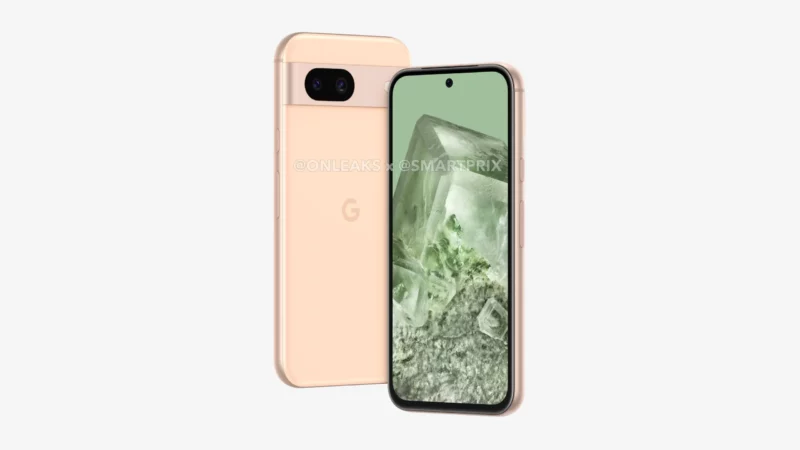Check back in May —
A better screen, better SoC, and maybe a higher price.

Enlarge / OnLeak’s Pixel 8a render.
Google’s next mid-range phone, the Pixel 8a, is rapidly approaching release. The presumed launch date has always been Google I/O, and that’s officially set for May 14. Although the Pixel 8a recently hit the Federal Communications Commission, the box has leaked, and renders have been out since October, we haven’t really talked specs.
The ever-reliable Kamila Wojciechowska has a new article for Android Authority detailing some specs for the upcoming device. Apparently, there are some big upgrades planned. The Pixel 7a took a big jump to a 90 Hz display, and the Pixel 8a is encroaching even more into flagship territory with a 120 Hz display. Wojciechowska’s source says the Pixel 8a display will be a 6.1-inch, 120 Hz, 2400×1080 OLED panel with an improved 1,400 nits brightness. The display’s 120 Hz screen will not only make the phone more competitive here; it will also be a big deal for the Pixel line’s recent expansion into India, where 120 Hz is the norm at this price range.
The report says to expect the same camera loadout as the Pixel 7a, along with the newer Google Tensor G3 chip, just like the other Pixel 8 phones. Google doesn’t mention it on the spec sheet, but Wojciechowska says internally there is a small difference: It’s the same silicon on the A-series, but Google goes with a cheaper, hotter silicon packaging method. So expect some thermal differences.
One major surprise in the report is that the Pixel 8a will support DisplayPort via the USB-C port, which would let you plug your phone into a monitor and power the display. This has long been a possibility on Android phones, and some third parties like Samsung have taken advantage of the display-out to allow phones to power a PC-like interface. Google has always specifically gone out of its way to disable display-out on Pixel phones, though, even if it’s built into the hardware. Presumably, this has been to prop up Google’s wireless “Google Cast” ecosystem, but something has been changing lately. DisplayPort alternate mode was actually recently enabled for the Pixel 8 on one of the new Android betas. Now, it’s apparently going to be enabled on the Pixel 8a out of the box. It’s unclear why or whether Google has any software mode that will make the feature more useful. For now, it’s just a simple display mirroring mode.
Another nice improvement is the potential for more country availability. Today, the Pixel 7a is sold in 21 countries (the official list is here). Wojciechowska’s Pixel 8a leak includes “electronic warranty labels” for 31 countries, which suggests—but doesn’t guarantee—wider distribution. The new countries are Czech Republic, Estonia, Finland, Hungary, Lithuania, Latvia, Poland, Romania, Slovakia, and Slovenia.
One downside to the Pixel 8a release might be a higher price. WinFuture’s Roland Quandt reported that the 8a price in Europe is going up from the Pixel 7a’s 499 euros to 550 euros. If the US price goes up a similar $50, the Pixel 8a would cost $549. When the Pixel 7a came out, Google kept the Pixel 6a around and dropped the price to $349; hopefully, we’ll get a similar Pixel 7a cost reduction, too.